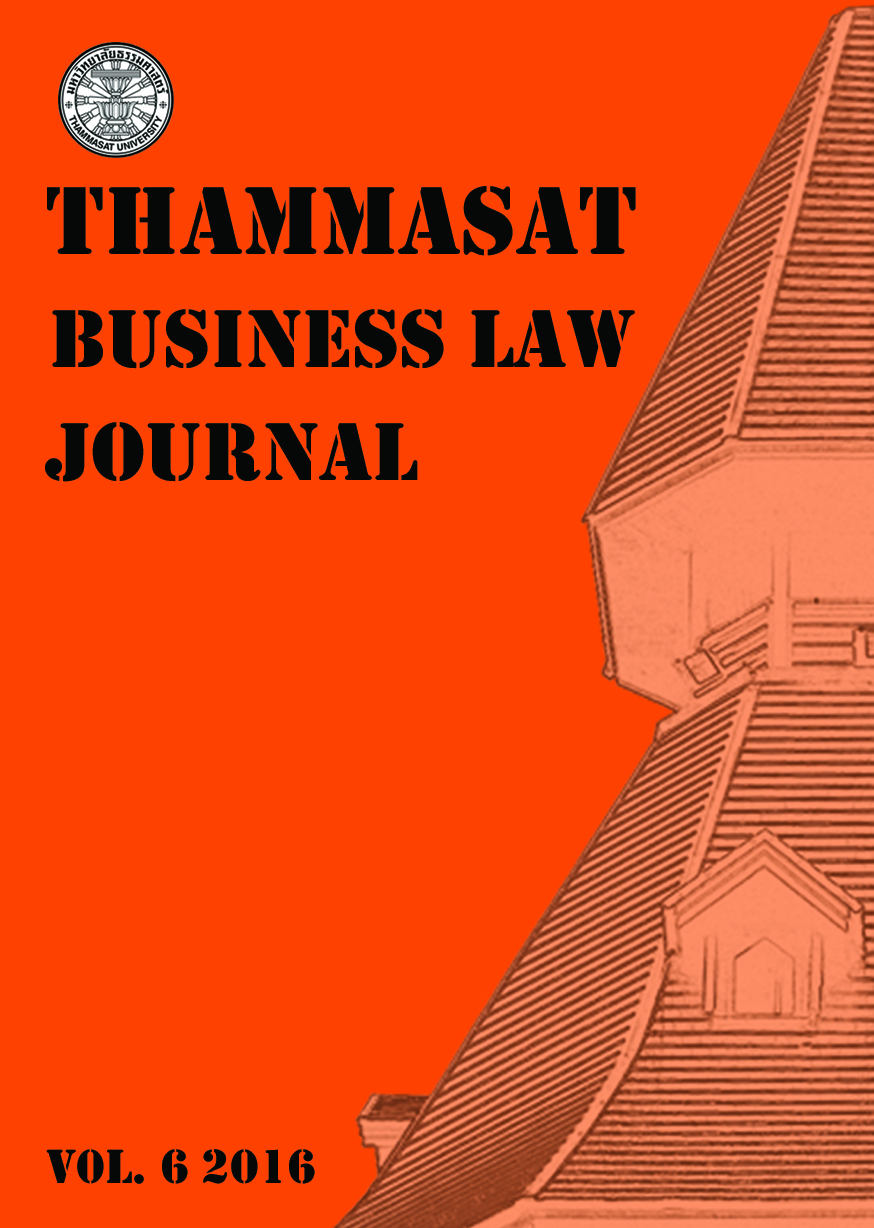PATENT EXHAUSTION IN CASES OF RECYCLING AND REPAIR OF GOODS
Main Article Content
Abstract
Everyone knows that recycling and repairing can generally reduce resource consumption and waste production. Additionally, their economic benefits entice consumers to repair and recycle goods. However, in cases of patented goods, these activities may collide with exclusive rights of patentees.
According to the patent system, a patent is granted to an inventor with a set of exclusive rights to prevent third parties from making, using, offering for sale, selling or importing a patented product within a limited period of time. Nevertheless, under the exhaustion doctrine, such an exclusive right is consumed when the patented product has been legitimately sold in order to limit an exploitation of the patent and to support free circulation of goods. Thus, purchasers can use or resell it without permission from the patentees. However, the purchasers cannot construct a new article in place of the original one. Recycling the used goods into the recycled goods to serve its initial utility, e.g., recycled ink cartridges, and repairing of damaged goods, falls in between the realm of permissibility under patent exhaustion and infringement of patent protection. The extent of the act in which purchasers are able to commit on the patented goods might be questioned. With the unpredictability of the scope of rights, purchasers who merely recycle or repair may be liable for patent infringement, which could cause some enterprises not to engage in recycling businesses.
Additionally, the patentee may create post-sale restrictions on use of their goods, such as using a “Single Use Only” sign, to avoid exhaustion of the patent right. If such restrictions, are allowed to be enforceable, perhaps it could hinder purchasers and consumers in using the goods under normal social convention.
This article will present laws and court decisions from United States and Japan, which provide a repair defense as an extension of the exhaustion doctrine and have established their own standards for distinguishing permissible recycling/repair from reconstruction. It also provides an analysis of posted problems from the inadequate provision in Thai Patent Act to deal with these matters. Moreover, a recommendation will be proposed to resolve such problems.
Article Details
References
Mills, John Gladstone. Patent Law Fundamental. 2nd ed. St. Paul: West Group, 2002.
Mueller, Janice. An Introduction to Patent Law. 2nd ed. New York: Aspen, 2006.
Pires de Carvalho, Nuno. The TRIPS Regimes of Patent Rights. 2nd ed. London: Kluwer Law International, 2005.
World Intellectual Property Organization. WIPO Intellectual Property Handbook: Policy, Law and Use. 2nd ed. Geneva: WIPO Publication, 2008.
Himanshu, Vijay Kumar. “Patent Monopoly and Doctrine of Exhaustion: Limits on Exclusive Right.” Journal of Intellectual Property Rights 16, (November 2011).
Kuroda, Kaoru, & Katayama, Eiji. “Efforts to Establish Clear Standards for Exhaustion in Japan.” Washington Journal of Law, Technology, & Arts 7, No. 4 (Spring 2012).
Rovner, Amber Hatfield. “Practical Guide to Application of (or Defense against) Product-Based Infringement Immunities under the Doctrines of Patent Exhaustion and Implied License.” Texas Intellectual Property Law Journal 12, No. 227 (Winter 2004).
Zheng, Wentong. “Exhausting Patents.” UCLA Law Review 63, No. 122 (2016).


